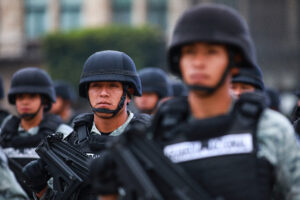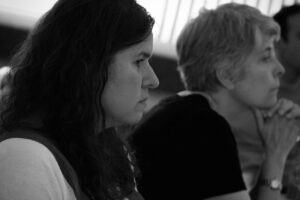On September 6, 2015, the group of international experts providing technical assistance to the Mexican government in the investigation of the September 2014 enforced disappearance of 43 students in Guerrero, Mexico issued an extensive 560-page report of their findings after six months of work. Following is a summary of the report’s main findings and recommendations, as well as information on the Mexican government’s initial investigation and its response to the report.
Background on the Disappearance of 43 Students
On September 26, 2014, students studying to be teachers at a rural college in Ayotzinapa, Guerrero (Escuela Normal Rural Raúl Isidro Burgos) commandeered buses in Iguala, Guerrero, with the intention of traveling to Mexico City for a protest. The students were pursued and violently attacked by municipal police; 43 of the students were detained by the municipal police and their whereabouts remain unknown. The case has caused massive protests in Mexico and internationally as it demonstrates the Mexican government’s failure to effectively investigate and prosecute human rights violations and other crimes—even in high-profile cases—and the failure to address disappearances in the country, which have skyrocketed in recent years.
On January 27, 2015, Mexico’s then Attorney General, Jesús Murillo Karam, presented the government’s theory of the case, which it proclaimed to be the “historic truth.” In this version, the then mayor of Iguala, Jose Luis Abarca Velazquez, ordered the attack on the students because he feared that they had arrived in Iguala to interrupt a political event at which his wife was presenting. In a series of attacks, municipal police from Iguala and neighboring town Cocula attacked the students and detained 43 of them. According to the government, these 43 students were later handed over to the local organized crime group Guerreros Unidos, who killed the students and burned their bodies at a trash dump in Cocula. The burned remains were then collected in trash bags and discarded in the San Juan River in Cocula.
Previously, in October 2014, Mexican investigators had discovered bags in the river containing the supposed charred remains of the students. The contents of these bags were analyzed by a specialized lab at the University of Innsbruck in Austria, where the remains of one student, Alexander Mora Venancio, were identified. However, many of the remains are so severely burned that forensic testing has been almost impossible. In February 2015, the Argentine Forensic Anthropology Team (Equipo Argentino de Antropología Forense, EAAF), which has been acting as an independent forensic expert for the families of the students since October 2014, expressed doubts about the Mexican government’s case theory and made clear that it was not present when the bags were recovered from the river and that bags had already been opened when they were summoned by Mexico’s Attorney General’s Office (Procuraduría General de la República, PGR).
The Group of Experts’ Mandate
Following the attacks on the students, families of the victims and their legal representatives as well as the Mexican government requested technical assistance from the Inter-American Commission on Human Rights (IACHR). In November 2014, the three parties signed an agreement that led to the formation of the Interdisciplinary Group of Independent Experts (Grupo Interdisciplinario de Expertos y Expertas Independientes). The Group of Experts is made up of five individuals: Carlos Martín Beristain (Spain), Angela Buitrago (Colombia), Francisco Cox Vial (Chile), Claudia Paz y Paz (Guatemala), and Alejandro Valencia Villa (Colombia). Their mandate was to: search for the disappeared students, develop lines of investigation, provide attention to the victims, and help to address the broader problem of enforced disappearances in Mexico. The Group of Experts began its work in March 2015 and had an initial mandate of six months with the possibility of extension. In August 2015, the Group requested an extension of its mandate given the pending information requests, forensic analysis, and investigation of lost evidence, among other issues. In addition to its most recent report on initial conclusions, the Group of Experts has presented five monthly reports that describe progress in the investigation as well as various areas of concern.
Main Findings of the Group of Experts’ Report
1. The students were not burned at trash dump
The Group of Experts found no evidence to support the Mexican government’s theory that the 43 disappeared students were cremated at the Cocula trash dump on September 27, 2014. The Group of Experts hired an internationally recognized fire specialist to examine the Cocula trash dump where the students were allegedly murdered and burned, who found no evidence of a fire large enough to cremate 43 bodies. The Experts also conclude that there is no evidence that sufficient materials were available to fuel a fire long enough and large enough to burn the bodies and that a fire of such dimensions would have caused a forest fire in the heavily wooded area surrounding the trash site. Additionally, there are reports that it had been raining on the night the students were allegedly cremated.
2. All of the security forces in the area were aware of the prolonged and coordinated attack against the students but did not intervene to protect the students
In addition to the 43 forcibly disappeared students, six people, including three students, were killed, more than 40 people were injured, some gravely, and over 180 people were direct victims of human rights violations. The Group of Experts report that the students were attacked nine times over the course of three hours, and that all authorities in the area, including state and federal police, as well as the Mexican army, knew of the students’ movements and of the police attacks on the students yet did not come to their aid. There are also reports of the presence of security forces at the crime scenes during various points in the night; for example, following the arrests of the students, an army patrol vehicle visited the police station where a group of the detained students was allegedly taken. Additionally, the Experts conclude that the operation against the students had to have been centrally coordinated, given its sustained nature and the involvement of several patrols and two different police forces (from Iguala and Cocula).
3. Motive for the attacks
The Group of Experts rejects that the motive of the attack on the students was to prevent their intervention in a political event. By the time the students arrived in Iguala, the event of former mayor Abarcas’s wife had already concluded. The students had arrived in Iguala to commandeer buses—a traditional practice by students—to take to Mexico City to participate in a demonstration on October 2.
Instead the Experts conclude that a possible motive of the massive and sustained attack on the students was their unintentional intervention in a drug trafficking ring that uses the buses in Iguala to transport drugs. The State of Guerrero is a large producer of poppy and Iguala is an important hub for the northbound trafficking of heroin, specifically to Chicago, Illinois in the United States.
There are serious contradictions and omissions in the PGR’s case file regarding a fifth bus commandeered by the students on the night of the attacks, despite testimony from the students regarding its existence and its inclusion in the initial investigation handled by Guerrero state authorities. The Group of Experts hypothesizes that this fifth bus could have contained hidden drugs or money. The Experts point to several reasons why the fifth bus warrants further investigation, including contradictions in the driver’s testimony, the fact that it was the only bus the students used that was not violently attacked, and that the bus registered on video surveillance cameras during the night of the attacks does not correspond with the bus that was presented for investigation.
Given the extreme level of violence used against the students to prevent the buses from leaving the city, the Experts consider this hypothesis to be a logical motive for the attack and recommend that it is investigated further.
Group of Experts’ Key Recommendations
- Continue the search. The Experts do not make any conclusions regarding the current whereabouts or the fate of the disappeared students, and recommend that the Mexican government continues to search for the students.
- Open new lines of investigation. The Group of Experts recommends that the Mexican government open new lines of investigation, including investigating the possible connection to drug trafficking as a motive for the attacks. Though the Experts conclude that the students were not burned at the trash dump in Cocula, given the identification of the charred remains of Alexander Mora Venancio in December 2014, the Experts recommend that the government investigate both privately-owned and government-owned crematories in the area.
- Investigate authorities.The Experts recommend that all authorities who obstructed the investigation be investigated, as well as all security forces whose officers were present during the night of the attacks, including the army and state, federal, and ministerial police, for their role in the attacks or their failure to intervene and protect the students.
- Address the issue of enforced disappearances in Mexico. The Group of Experts recommends that the Mexican government design and implement protocols to search for disappeared persons. The Experts also emphasize the urgent need to pass legislation regarding enforced disappearances and the need to create a unified national disappeared persons database.
The Mexican Government’s Response and Next Steps
On September 6, Mexico’s Attorney General, Arely Gomez, who replaced former Attorney General Jesus Murillo Karam shortly after he presented the Mexican government’s version of the students’ disappearance, affirmed that her office will analyze all aspects of the report to determine what to incorporate into the investigation but did not address the serious discrepancies between the government’s conclusions and the Group of Experts’ findings. On September 7, the director of the Criminal Investigations Agency (Agencia de Investigación Criminal, AIC) at the PGR, Tomás Zerón de Lucio, defended the government’s case theory, asserting that the disappeared students were indeed killed and burned at the trash dump in Cocula. Zerón de Lucio rejected the Group of Experts’ recommendation to open new lines of investigation and confirmed the creation of a group of forensic experts who will review and validate the government’s original investigation. Although the PGR’s Sub-Prosecutor for Human Rights Eber Betanzos expressed openness to investigating the use of buses for drug trafficking as a possible motive for the attack, he too rejected the notion that the Group of Experts’ report negates the government’s theory about the trash dump.
Regarding an extension of the Experts’ mandate, in August the IACHR announced an extension of Group’s mandate and gave the families’ legal representatives and the Mexican government until September 15 to decide on the possible renewal of the mandate. Attorney General Gomez confirmed that the Mexican government has agreed to an extension of the mandate; Mexico’s newly appointed Foreign Minister Claudia Ruiz Massieu is in discussions with the legal representatives of the students’ families and the IACHR to finalize the timeframe and terms of the extension.
Given the multiple shortcomings in the way the original team at the PGR handled the investigation, new investigators within the PGR should be assigned to coordinate the work with the Group of Experts. The Group of Experts’ initial conclusions call for a significant rethinking of the case and the possible motives, which require investigators who are open to exploring other theories. The Mexican government must consider the families and victims and not prioritize expediency over veracity. After nearly a year of seeking truth and justice, the families and victims of the September 2014 attacks deserve an explanation that is fully supported by scientific evidence.
Click here to read WOLA’s press release on the Group of Experts’ report.
To access the Group of Experts’ full report and additional materials on the case, click here.


